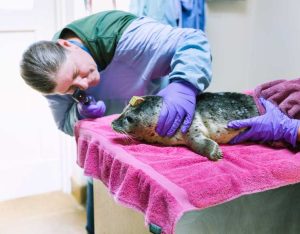🧭 End of Season Scuba Gear TLC: Clean, Inspect, and Store for a Safe Start Next Season
Subtitle:
Before you pack your dive gear away, give it the attention it deserves. A little end-of-season care today means safer, smoother dives next season.
As the water cools and dive trips wind down…
It’s tempting to toss your gear in the corner and dream of warmer days. But before you hang up your fins for the season, take a little time to give your scuba equipment the TLC it deserves.
Whether you’re wrapping up your diving year or planning a short break, proper cleaning and storage will save you time, money, and frustration — and most importantly, keep your dives safe and reliable when you’re back underwater. If you’re diving through the winter — maybe an ice dive, pool session, or tropical getaway — these tips still apply before your gear sits idle for an extended period.
Reference for image.

🫧 1. Rinse and Clean Everything
Even if you rinse your kit after every dive, this is the time for a deeper clean. Use fresh water and a touch of mild detergent (e.g., Dawn) to remove salt, sand, and grime.
If it’s too cold outside, your bathtub makes a great backup wash and rinse station (candles will help set the mood!). Be sure to let everything dry completely — trapped moisture can lead to mold, corrosion, or that unmistakable “gear bag funk.”
Gear-Specific Tips
Dry/Wet Suit
Give it a good soak and rinse. Run disinfectant through the pee valve system and check inflation/exhaust valves for sand or debris. For those using wet suits, if you “warmed” your yourself naturally on your last dive… maybe let it soak a little extra.
BC (Buoyancy Compensator)
Fill the bladder halfway with clean water, swish it around, and drain through every dump valve. Hang it to dry completely. A final rinse with disinfecting solution is also a good idea (e.g., Steramine Tablets).
Regulators
If necessary and under pressure, soak the 2nd stages in fresh water.
Miscellaneous Gear
Empty your pockets and rinse it all — masks, snorkels, reels, wet notes, line cutters, etc. Anything that’s been wet deserves attention.
🔍 2. Inspect as You Go
Cleaning time is also inspection time. Look for cracks, leaks, or wear. If anything seems questionable, make a note — or better yet, schedule service now while technicians have shorter lead times than in spring.
Inspection Checklist

Dry/Wet Suit
Check zippers, seals, seams, and valves.
BC
Inspect buckles, clips, inflator hoses, and exhaust valves. Leave the bladder inflated overnight to confirm there are no leaks.
Regulators
Examine hoses, swivels, mouthpieces, and any cave line tie-offs. Replace worn tie-offs every 1–3 years (depending on use).
Miscellaneous
Unwind reels and spools to check line integrity. Remove batteries from lights and scooters, clean and re-lube O-rings, and check mask straps and fin buckles for cracks or wear.
🧾 3. Maintain Equipment Records
While your gear is out and drying, take a few minutes to update your equipment log. Record purchase dates, serial numbers, and last service dates. Photos or videos are great to keep for insurance purposes (e.g., lightning can strike) — and your log helps you track maintenance and plan upgrades.
🧳 4. Store Smart
Store your gear in a cool, dry place away from direct sunlight, dust, and temperature swings. Avoid attics, garages, or basements where humidity and freeze–thaw cycles can damage materials.
Storage Guidelines
Dry/Wet Suit
Lubricate zippers, powder seals, and store loosely rolled or hanging from broad hangers. The idea is to minimize any creasing. I’ve had my semi-dry wet suit stored for a couple years. To prevent the cuff and ankle seals from sticking to the neoprene, I placed wax paper between the two surfaces, rolled it up loosely, and placed in an un-used duffel bag. I check it each year and so far so good.
BC
Inflate the bladder slightly to prevent sticking and hang or bag it to keep dust-free.
Regulators
Coil loosely in a padded bag. Back-out the inhalation control knob (anti-clockwise) to reduce pressure on the low-pressure seat.
Electronics
Remove all batteries to prevent corrosion. Shearwater recommends for extended storage periods, the battery should be removed to avoid leaks. This is especially true if you are using 1.5V alkaline batteries instead of the recommended lithium batteries. Dive data are securely stored on the Shearwater computers, even when the battery is removed.
🗒️ 5. Make Notes for Next Season
While you’re in maintenance mode, jot down anything you’d like to replace or upgrade before next dive season.
Maybe your “cheaters” in the mask need stronger magnification, or your seals are showing wear. Planning now gives you time to research, budget, and ask the Sea Snoopers family for recommendations.
🌊 The Bottom Line
Treat your dive gear well, and it’ll return the favor — keeping you safe, comfortable, and ready for adventure when the next dive season begins.
Do you have your own cleaning or storage rituals? Share your experience in the comments below — your tip might just save another diver’s gear (and wallet)!
